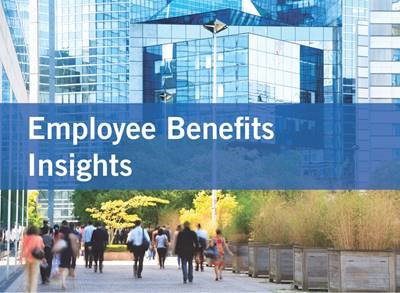Employee Benefits and Executive Compensation Changes in the American Rescue Plan Act of 2021

The American Rescue Plan Act of 2021 (the “ARPA”), which President Biden is expected to sign this week, includes a handful of provisions affecting employee benefit plans and publicly-traded companies’ tax deductions for executive compensation.
COBRA Subsidies and Special Enrollment Window
The ARPA provides up to six months of free COBRA coverage (whether provided under federal or state law), starting April 1, 2021, for certain “assistance eligible individuals.” In addition, these assistance eligible individuals will be entitled to take advantage of the subsidy by enrolling in COBRA only for the subsidy period during a special window. Plan sponsors are required to notify assistance eligible individuals about these rights. The government pays for the COBRA subsidies by providing plan sponsors of self-insured plans, and insurance companies with respect to fully-insured plans, a tax credit. More detailed information about these new COBRA provisions can be found here.
Pension Funding Relief
The ARPA changes certain funding rules for plan sponsors of single-employer defined benefit pension plans. The ARPA both extends into 2030 certain favorable interest rate provisions that were originally introduced in 2012 under the Moving Ahead for Progress in the 21st Century Act (MAP-21) and lengthens the time that plan sponsors can pay off their plan’s underfunded amounts from 7 to 15 years. More detailed information about these new pension plan provisions can be found here.
Increase in Employer-Provided Dependent Care Limits
The ARPA increases the dependent care flexible spending account (“FSA”) limit from $5,000 to $10,500 for the 2021 tax year only. Employers are not required to incorporate this temporary, increased limit. If an employer wishes to incorporate this optional feature, an employer must amend its dependent care FSA plan no later than the last day of the plan year in which the amendment is effective (e.g., December 31, 2021 for calendar-year plans), and such amendment can have retroactive effect back to the beginning of the plan year.
Expansion of Code Section 162(m)
Internal Revenue Code Section 162(m) limits the deduction that a publicly-held corporation can take with respect to compensation paid to each of its “covered employees” to $1 million per year. Current law provides that “covered employees” are the company’s Chief Executive Officer, Chief Financial Officer, and next three highest paid executive officers in any given year, plus any individual who has been a “covered employee” for any prior tax year beginning on or after January 1, 2017.
Starting with tax years that begin on or after January 1, 2027, the ARPA expands the number of “covered individuals” to also include the next five highest paid officers. These additional five individuals, however, do not follow the “once a covered employee, always a covered employee” rule. Rather, they are only considered a covered employee so long as they are one of the “next top five” paid individuals for the particular year. In other words, public companies will have to keep track of two lists of covered employees: (1) their “permanent list,” which covers the CEO, CFO, and next three highest paid officers each year and who, once on the list of covered employees, will always remain on the list, and (2) a “current year list,” which will include those officers who are the next five top paid officers for the year in question, and which may change from year to year.
 |
As part of Foley’s ongoing commitment to provide legal insight to our clients and colleagues, our Employee Benefits and Executive Compensation Group has a monthly newsletter we call “Employee Benefits Insights,” where we provide you with updates on the most recent and pressing matters concerning employee benefits and other related topics. Click here or click the button to the left to subscribe. |



